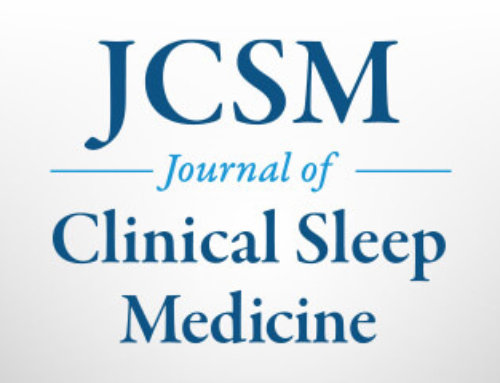WESTCHESTER, Ill.– African-Americans and other racial minorities have sleep durations associated with increased mortality. This is consistent with the belief that unhealthy sleep patterns among minorities – long sleep or short sleep – may contribute to health differentials, according to a study published in the September 1 issue of the journal SLEEP.
The study, authored by Lauren Hale, PhD, assistant professor in the graduate program in public health at Stony Brook University, focused on the responses of 32,749 people 18 years of age and older to a National Health Interview Survey (NHIS).
According to the results, African-American respondents had an increased risk of being short and long sleepers (less than or equal to six hours and greater than or equal to nine hours, respectively) relative to Caucasian respondents. Hispanics, excluding Mexican-Americans, and non-Hispanic “others” were also associated with increased risk of short sleeping.
The study also found that living in an inner city was associated with increased risk of short sleeping and reduced risk of long sleeping, compared to non-urban areas. Some of the higher risk of short sleeping among African-Americans can be explained by a higher prevalence of African-Americans’ habitation in the inner city.
“Inadequate or prolonged sleep durations may be due to an abundance of life stressors among racial minorities and residents of urban environments,” said Dr. Hale. “For example, people from disadvantaged communities may not have the luxury of sleeping through the night if they work night shifts or multiple jobs. People in poorer neighborhoods may also experience greater levels of psychosocial stress or depression that makes it difficult to fall or stay asleep.”
Social factors may also play a role in explaining these relationships, said Dr. Hale, adding that, for example, late-night socializing may be more common in the large cities because of the proximity of friends, households and increased opportunities for various social activities.
Structural conditions related to neighborhood and living environment may also contribute to the increased likelihood of high-risk sleep duration among racial minorities and city residents, noted Dr. Hale.
“Environmental factors of the inner city may prevent a solid night’s rest. Noise or light pollution may keep city residents awake later or wake them up earlier than those in less urban areas. These factors might lead to either shortening sleep or increasing fragmentation of sleep leading to prolonged reported sleep durations,” said Dr. Hale.
Lastly, Dr. Hale added that there may also be physiological differences in the demand for or the ability to sleep by racial category that are also associated with neighborhood characteristics.
Dr. Hale warned that these cross-sectional relationships are not sufficient to identify a causal link between race and sleep duration, and should not be over-interpreted.
“There may also be concerns about the use of self-reported data,” said Dr. Hale. “For example, people with sleep apnea may be reporting longer sleep times because they are in bed for longer, but they may not be sleeping more. That said, the results of this study are consistent with the hypothesis that unhealthy sleep patterns among African-Americans and city residents may contribute to health differentials.”
Dr. Hale noted that this information can assist public health and health care professionals in identifying segments of the population that are at a higher risk for sleep or sleep-related disorders. An understanding of the correlations between race, neighborhood context and sleep duration may also provide help in explaining outcomes where there are other racial disparities, such as test score gaps, educational attainment, employment and crime, said Dr. Hale. It may also lead to the incorporation of sleep and other biological variables in future public health, urban planning and social science research, added Dr. Hale.
Since 1957, the NHIS has conducted nationwide household interviews to collect information concerning the health of the U.S. civilian non-institutionalized population. The survey collects information on race/ethnicity, socioeconomic characteristics and health status.
Experts recommend that adults get 7-8 hours of sleep each night for good health and optimum performance.
Those who suspect that they might be suffering from a sleep disorder are encouraged to discuss their problem with their primary care physician or a sleep specialist.
SLEEP is the official journal of the Associated Professional Sleep Societies, LLC, a joint venture of the American Academy of Sleep Medicine (AASM) and the Sleep Research Society.
SleepEducation.com, a Web site maintained by the AASM, provides information about the various sleep disorders that exist, the forms of treatment available, recent news on the topic of sleep, sleep studies that have been conducted and a listing of sleep facilities.
For a copy of this article, entitled, “Racial Differences in Self-Reports in a Population-Based Study,” or to arrange an interview with an AASM spokesperson regarding this study, please contact Jim Arcuri, public relations coordinator, at (708) 492-0930, ext. 9317, or jarcuri@aasm.org.
# # #




